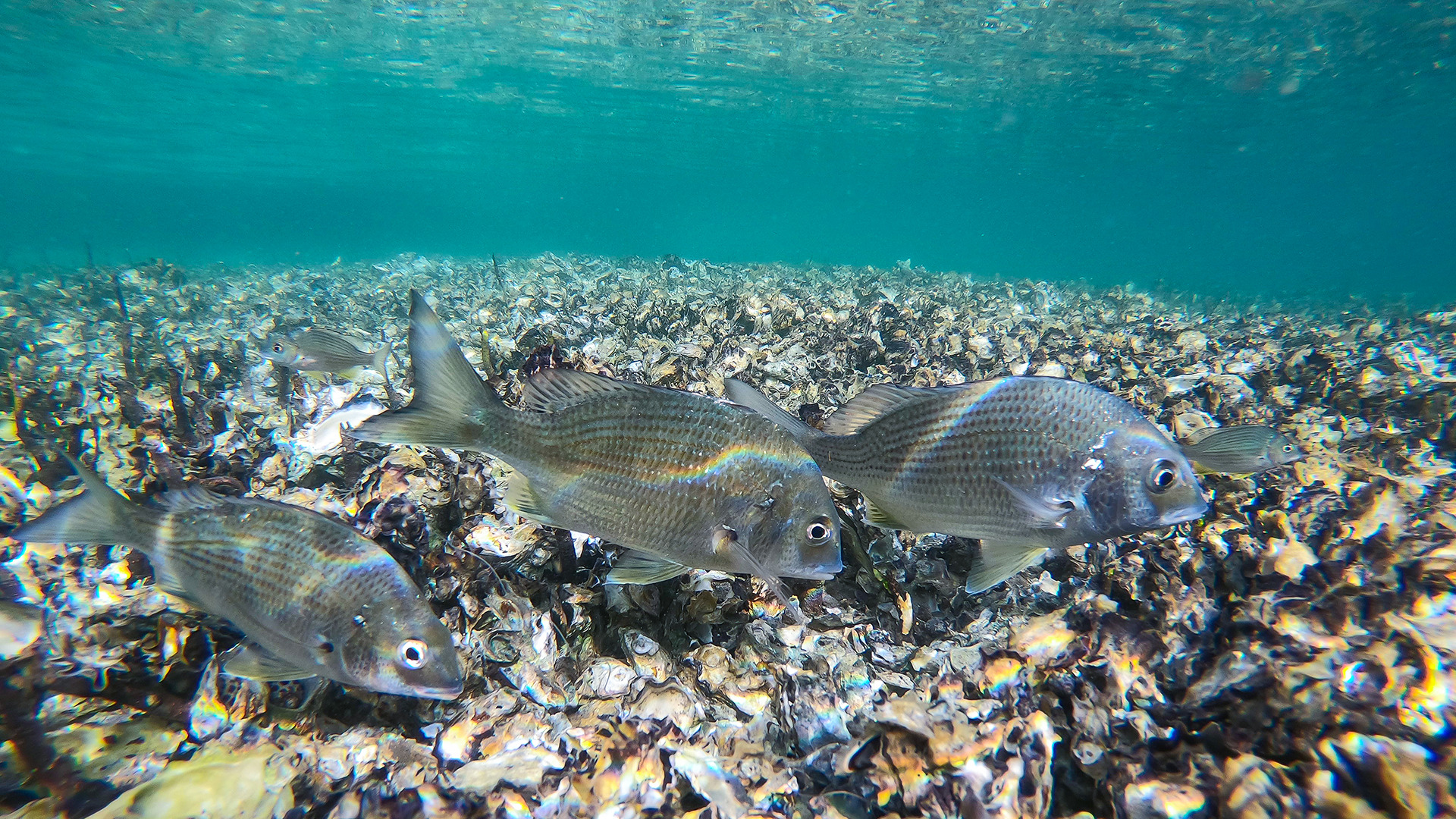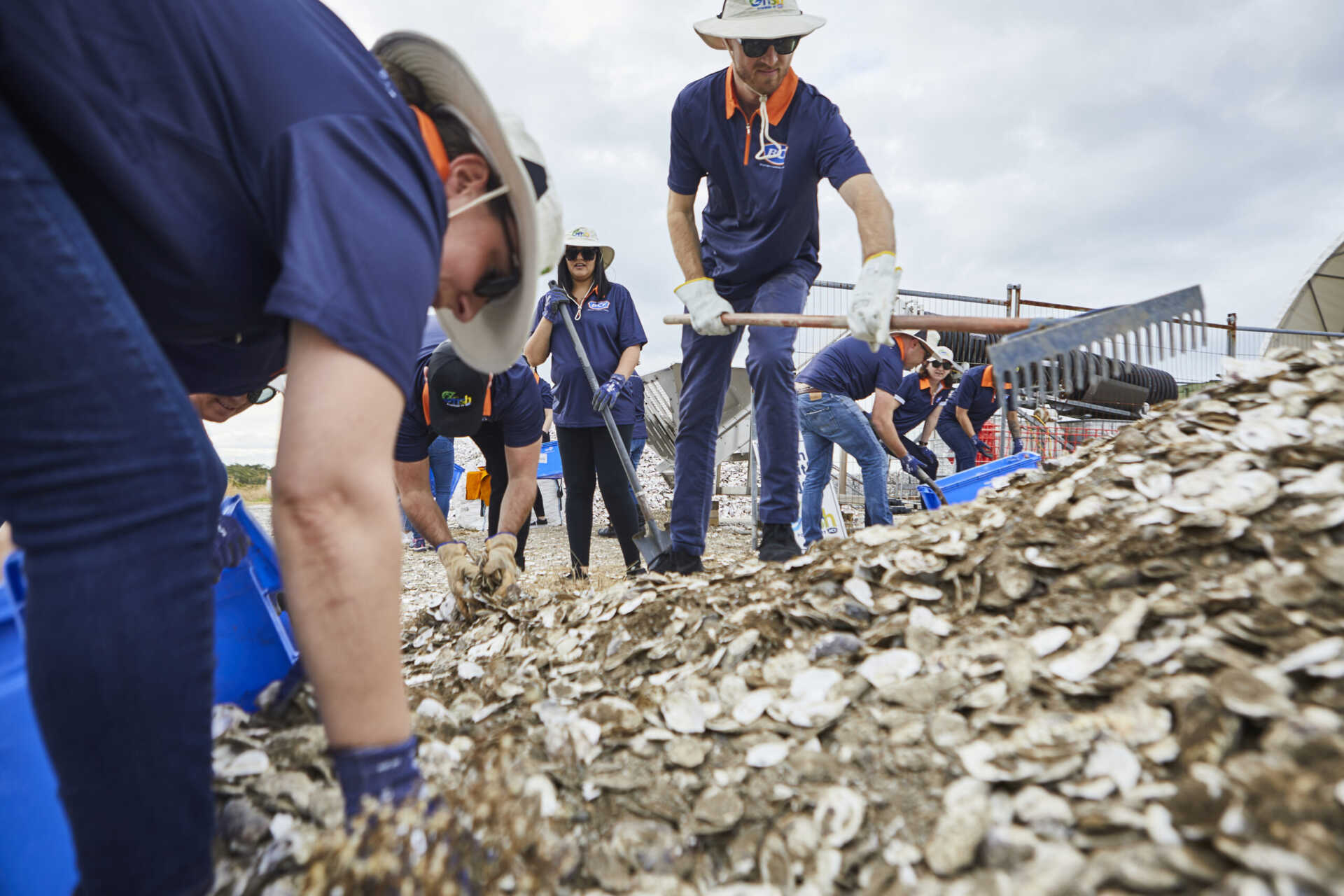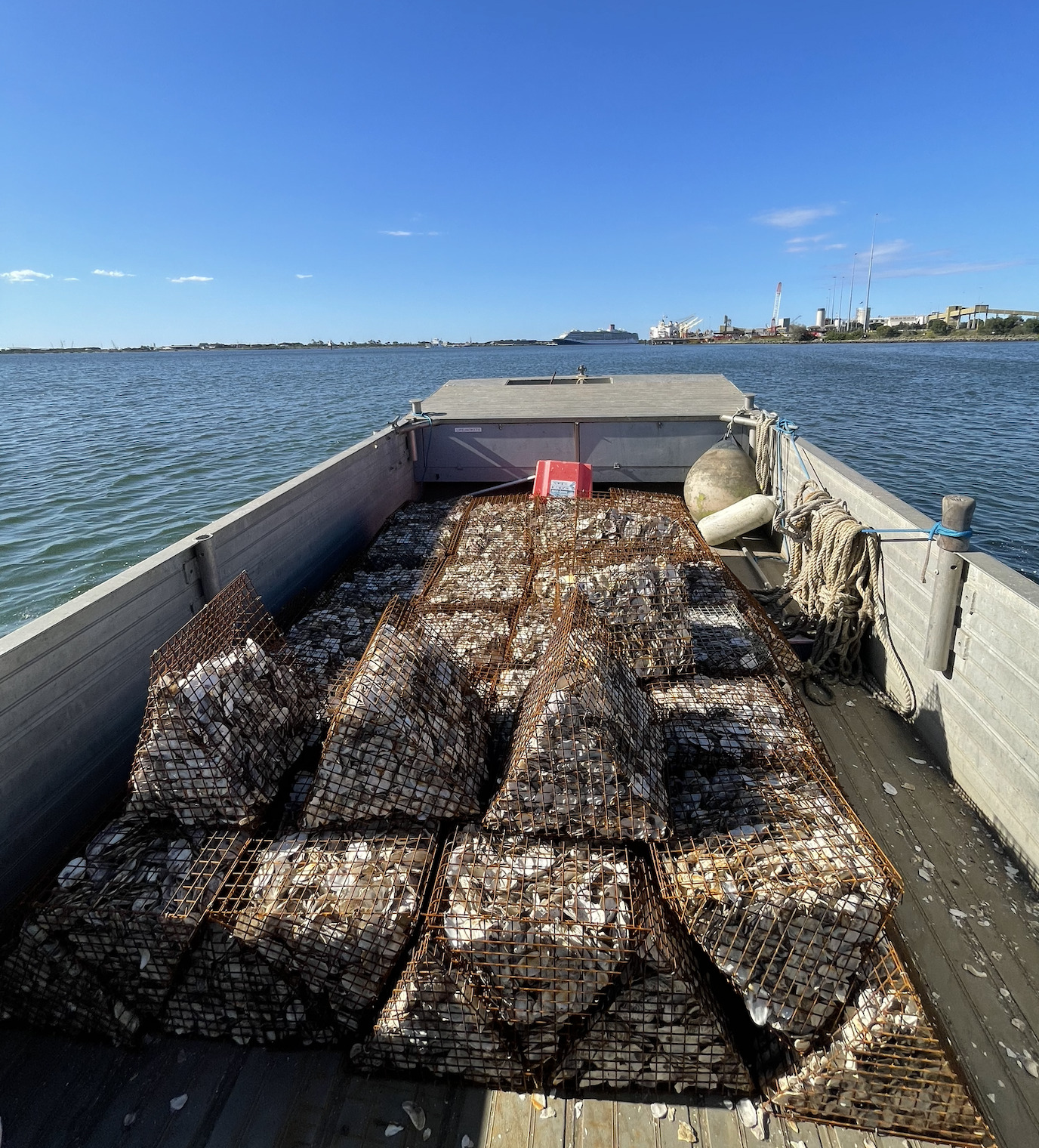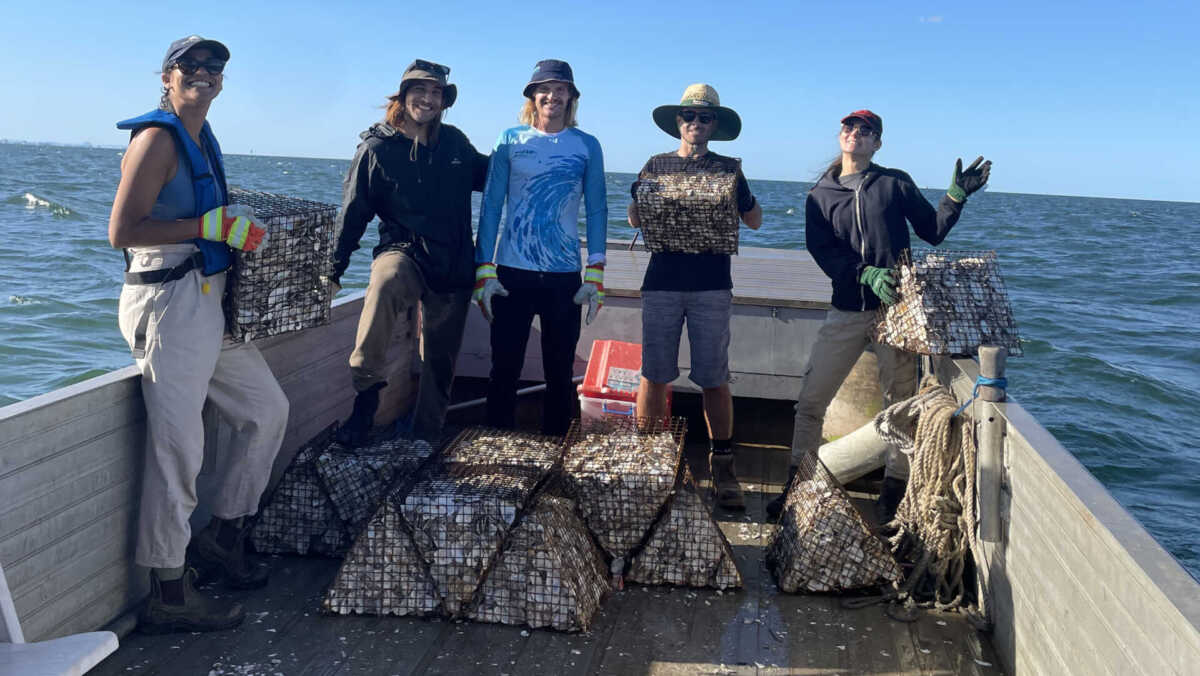Volunteers’ shellfish behaviour helps Moreton Bay

The OzFish Shellfish Revolution is the largest community-driven shellfish reef restoration program in Australia.
It has a footprint across the country, with various projects in Queensland, New South Wales, Victoria, and Western Australia.
Nowhere showcases why this habitat is so important and what can be achieved more than our Moreton Bay Shellfish Reef Restoration project in Queensland.
Beginning in 2019, our Central Moreton Bay Chapter set out to restore 100 hectares of shellfish reef during the next 10 years.
Fast forward to today, and what our rec fisher volunteers are achieving year-on-year in Moreton Bay is incredible. During the last 12 months alone, they have deployed more than 3,200 Robust Oyster Buckets (ROBs) to the restoration site.
Many of those have been deployed in recent weeks as November and December are a particularly important time in the lives of oysters in Moreton Bay. Put simply, it’s mating time.
In early summer, as water temperatures begin to rise, oysters begin the breeding process. When the water reaches 26c, they start to mate and release huge numbers of baby oysters (spat) into the water.
This is the moment our volunteers have been busily working towards.
The ROBs they have been building and filling with discarded oyster shells, that would otherwise have gone to landfill, are the perfect home for the spat. Oyster shell has a chemical signature that attracts the spat and they love the nooks and crannies that the ROBs offer.
The time of deployment of the completed ROBs is crucial though.
Time it just right and it’s a match made in heaven: millions of baby oysters looking for a home and a whole heap of tailor-made ROBS waiting to welcome them.
This year, we will be able to deploy more ROBs than ever before in time for the mating season thanks to support from the Queensland National Parks Service’s boat, ‘Spoonbill’.
Our Shellfish Revolution activities across Australia truly are a community effort, with the spearhead being rec fishers driving every element of restoration.
Thanks to everyone who’s been involved so far. If you’d like to find out more about our activity to return this vitally important habitat to Australia’s waterways.



